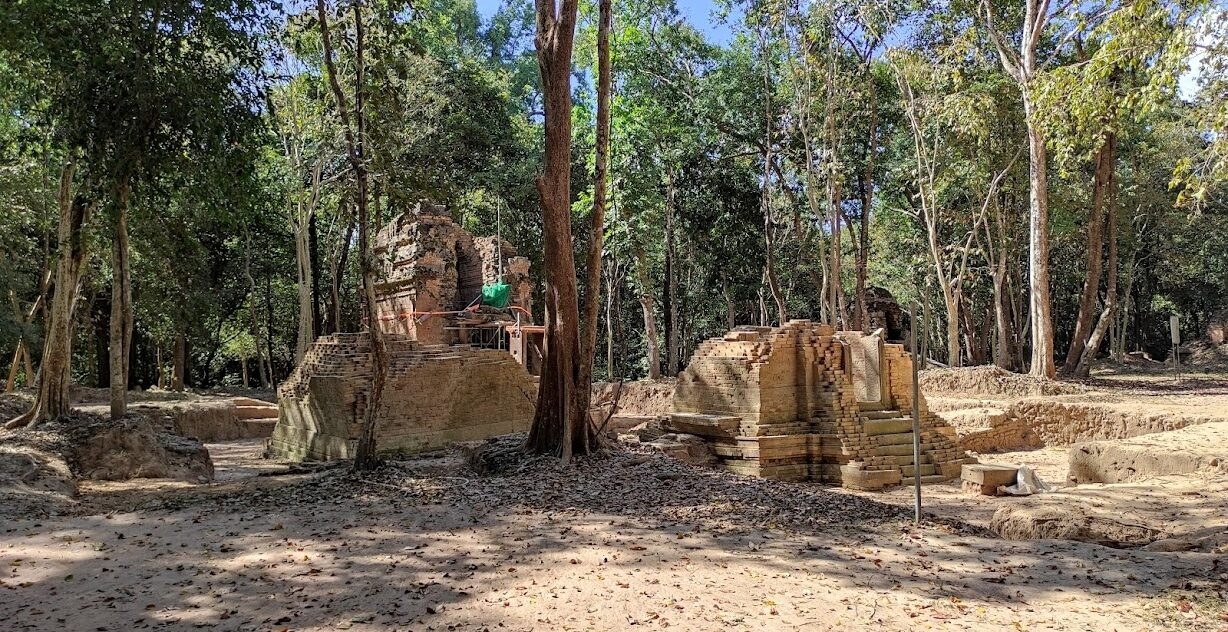Located northwest of the central cluster of temples of Sambor Prei Kuk, Prasat Srei Krup Leak consists of the remains of seven structures/shrines that, along with the nearby Prasat Robang Romeas, pre-date other temples in the area and are described as being at the transition of the earlier Chenla era to Sambor Prei Kuk architectural style. However, both sites also received modifications in later eras.
On early maps and still today, the shrines are designated as the L group and individually numbered from 1 in the north to 7 in the south.
Jan 2022 – Under restoration
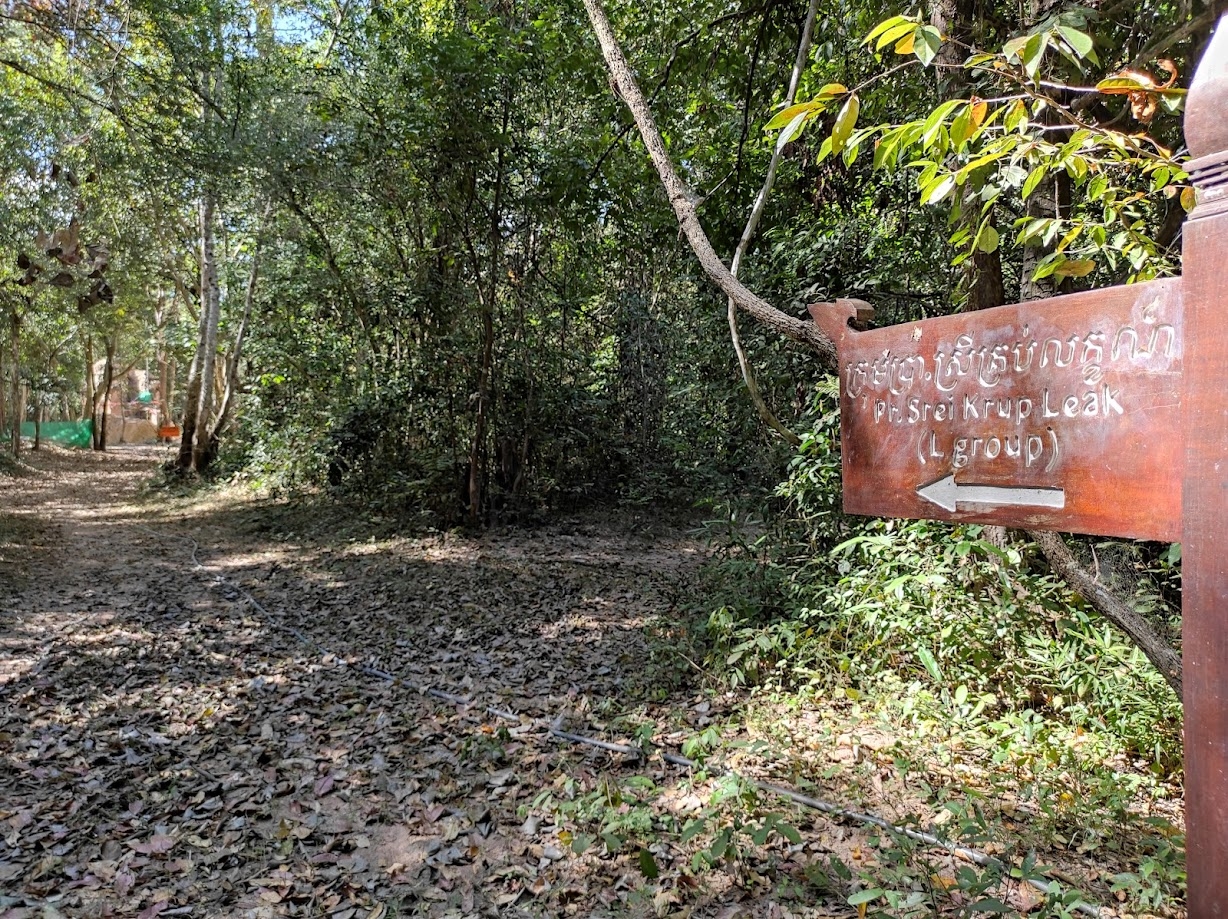
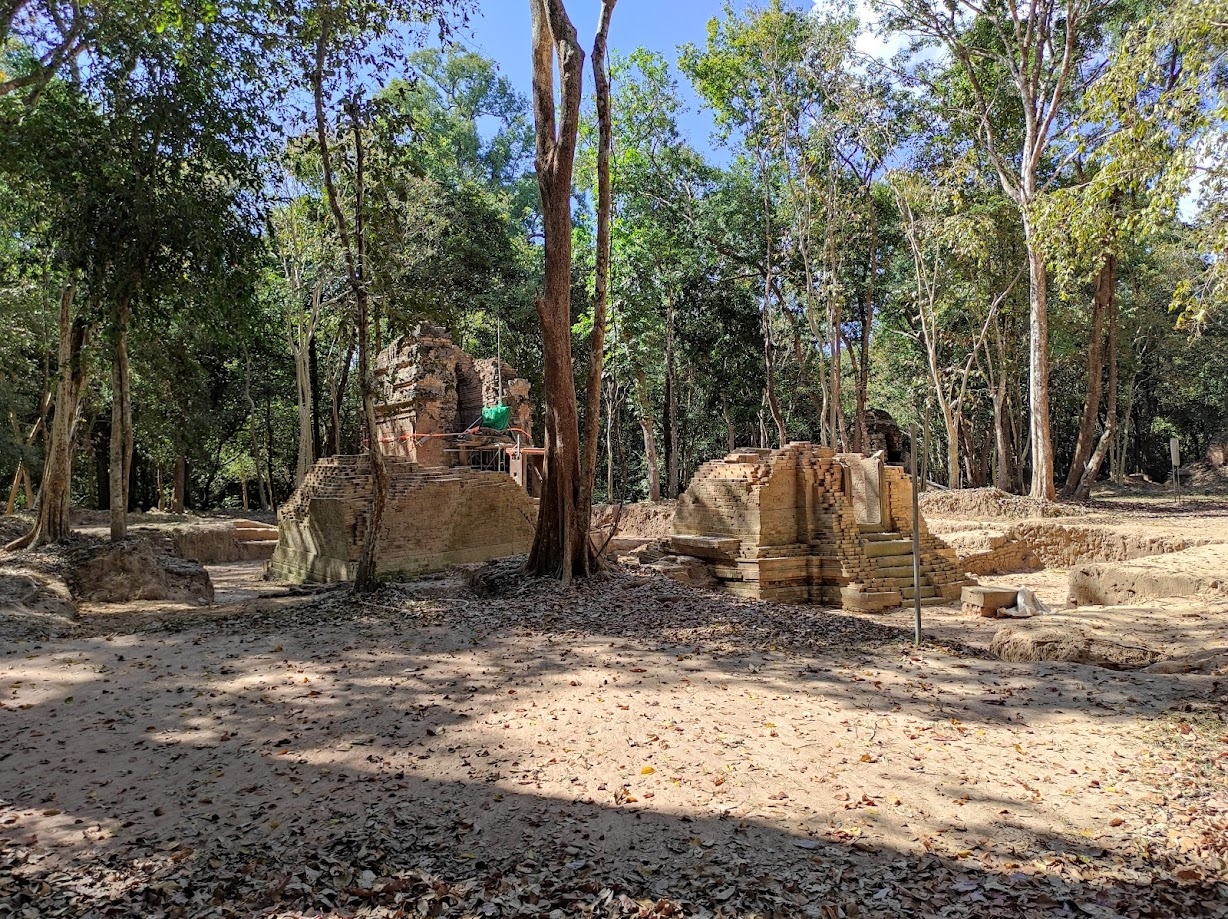
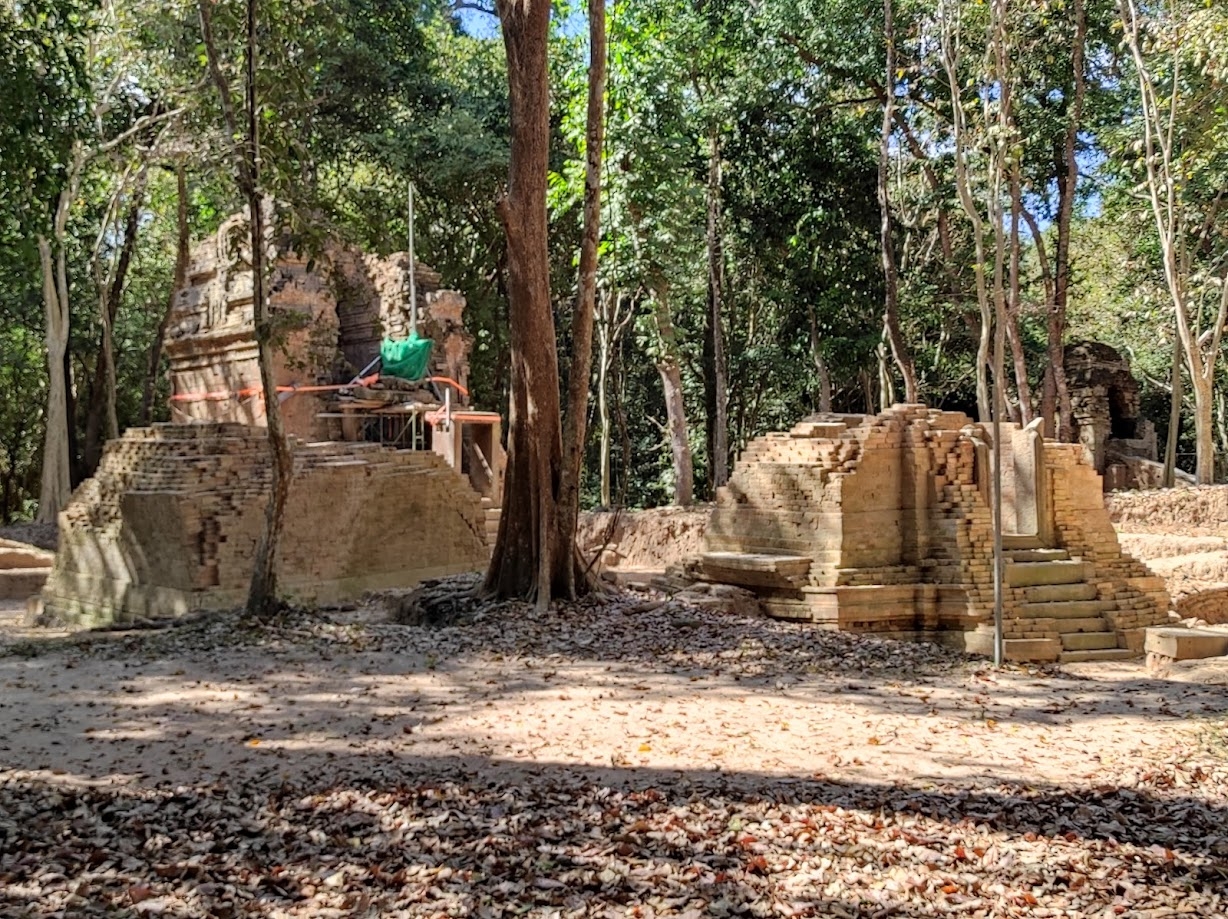
Photos from a later visit in December 2022
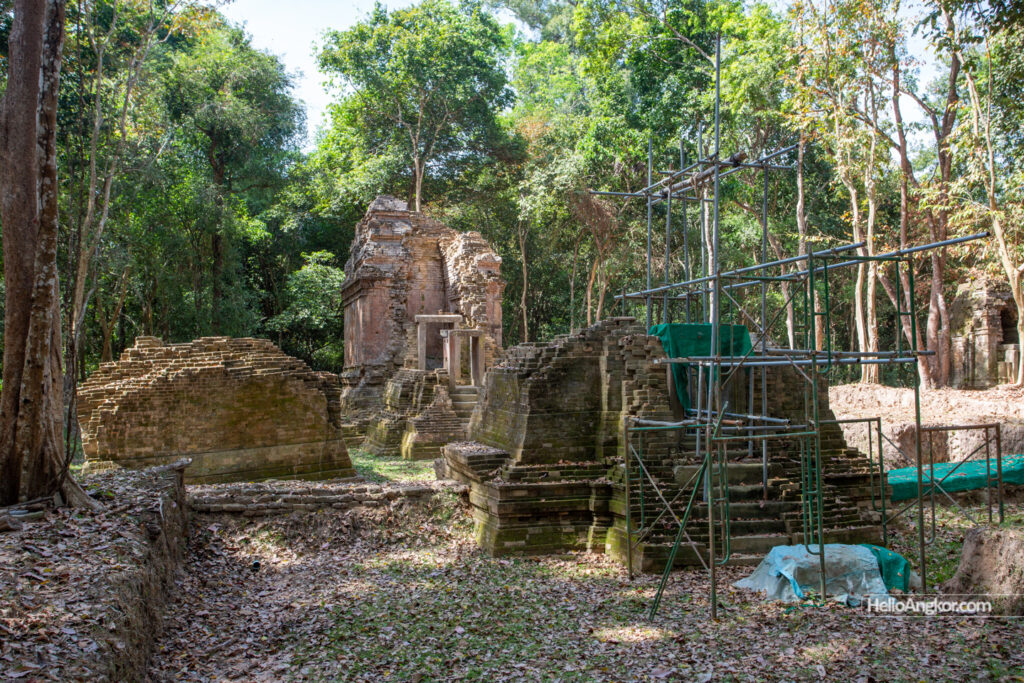
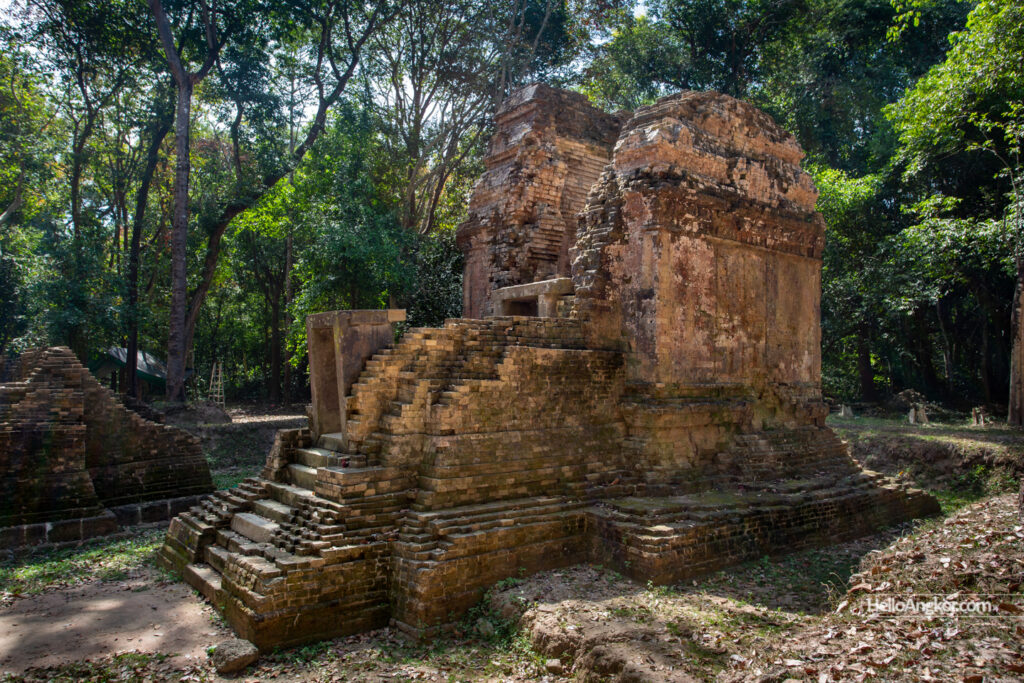
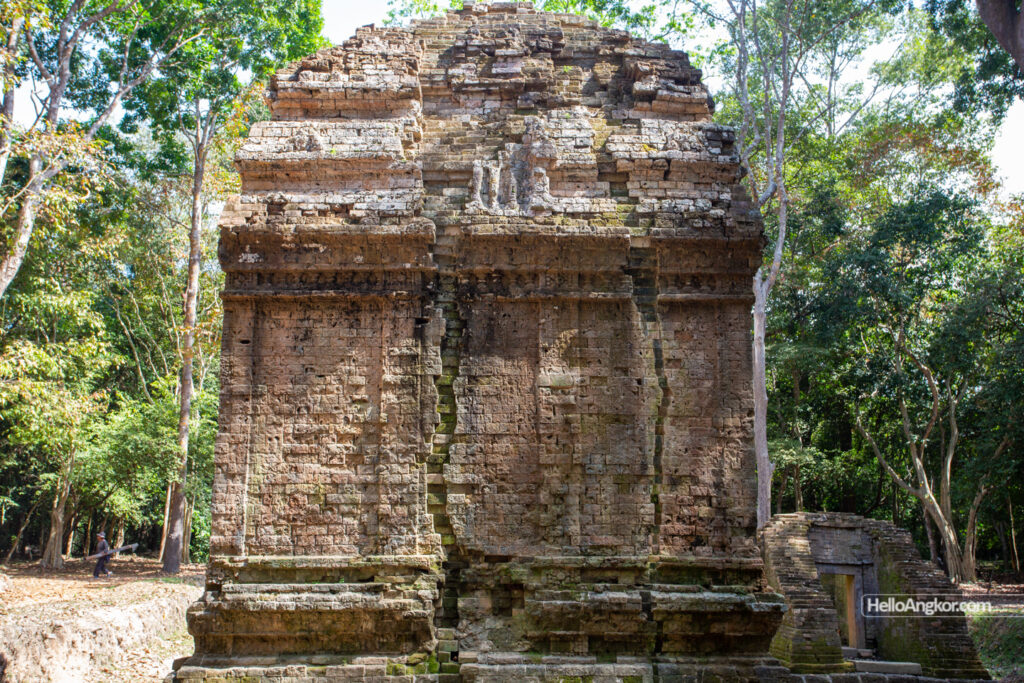
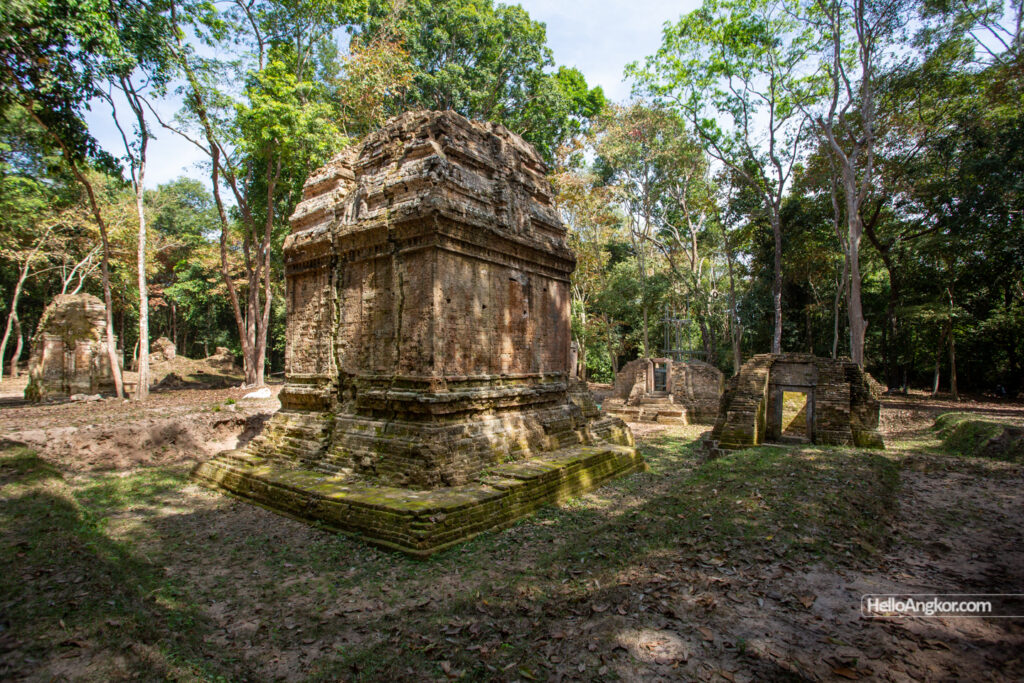
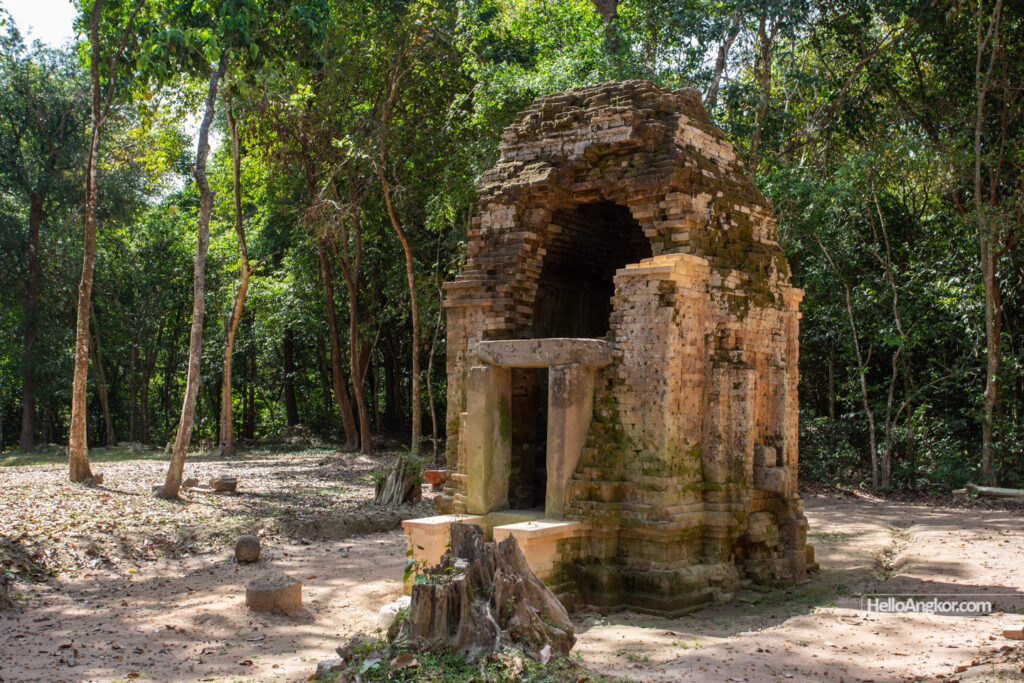
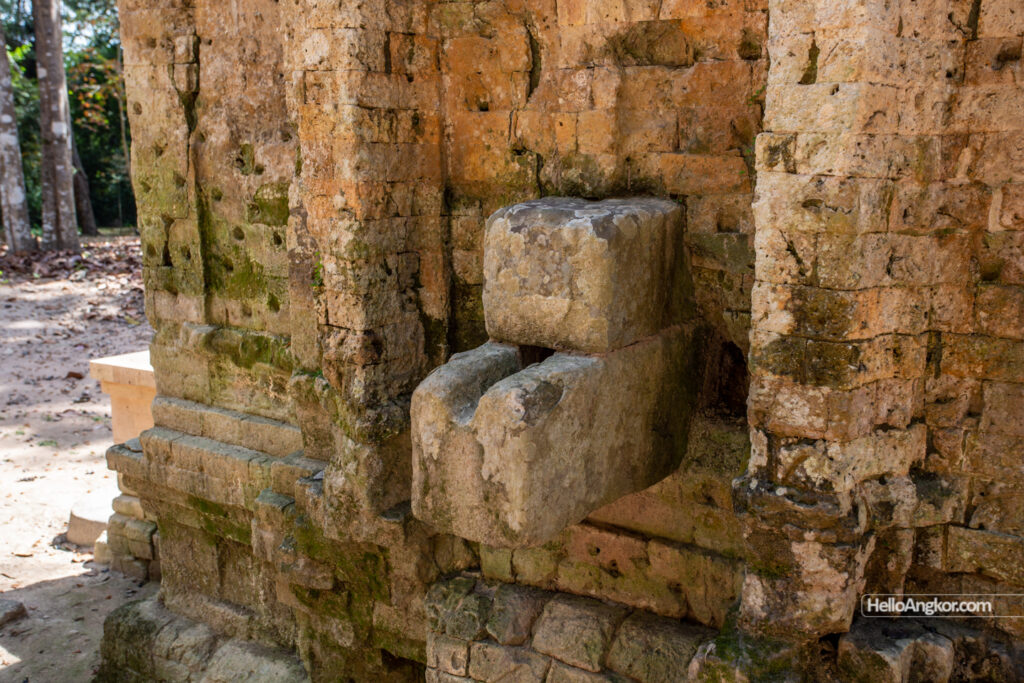
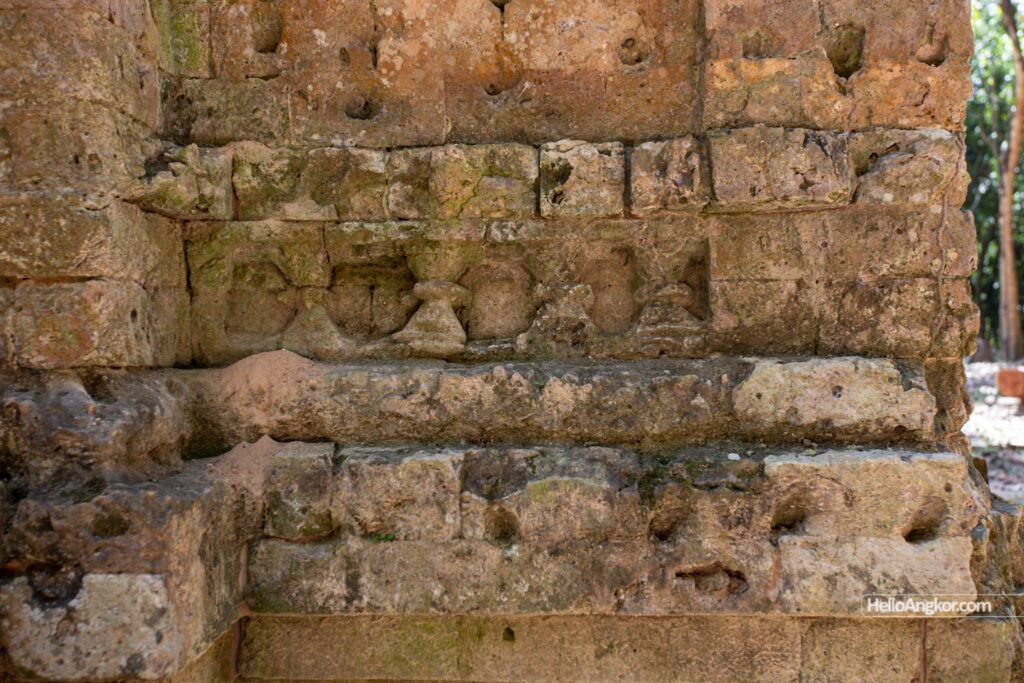
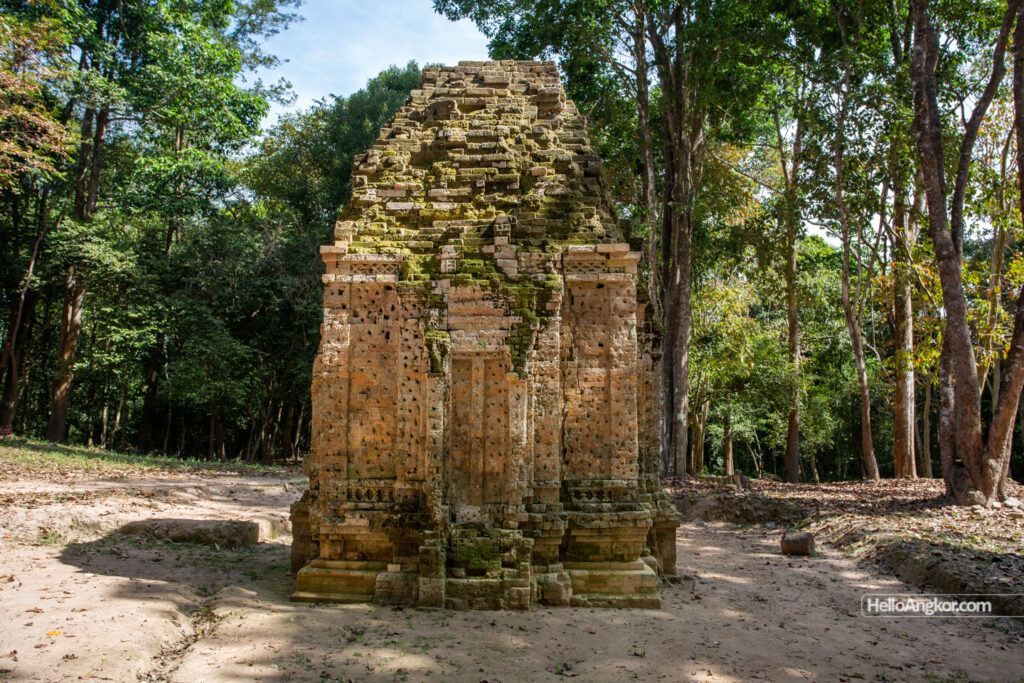
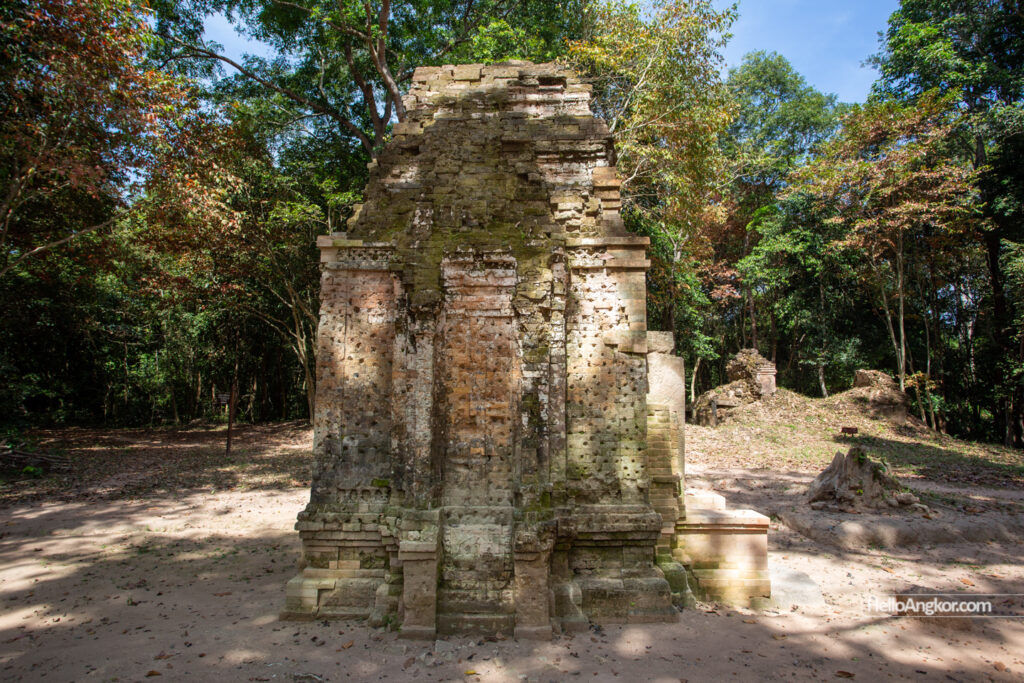

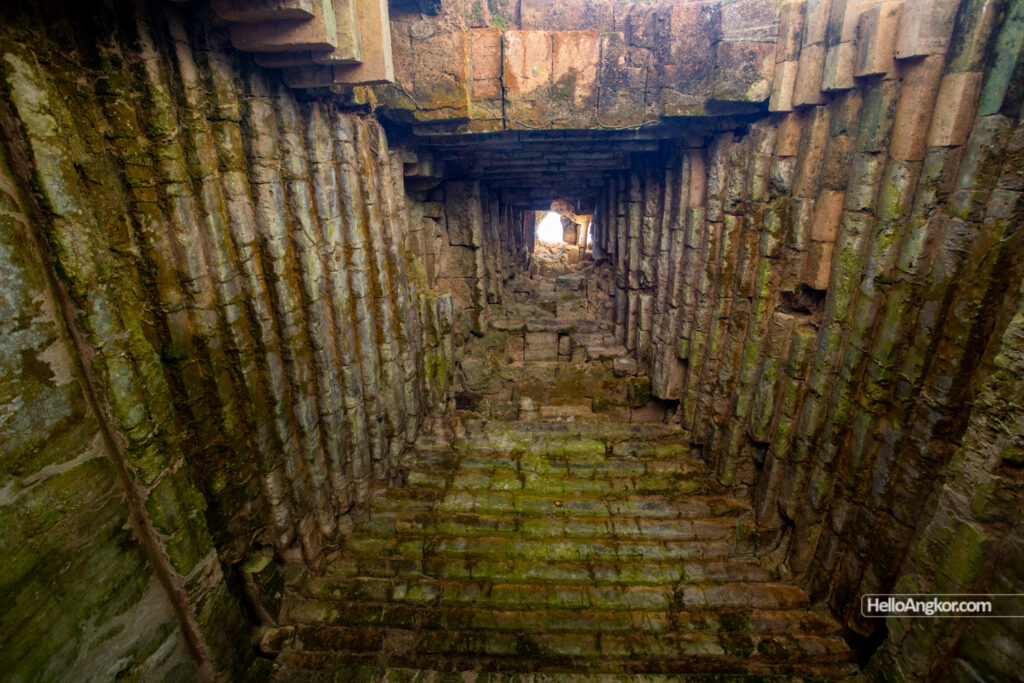
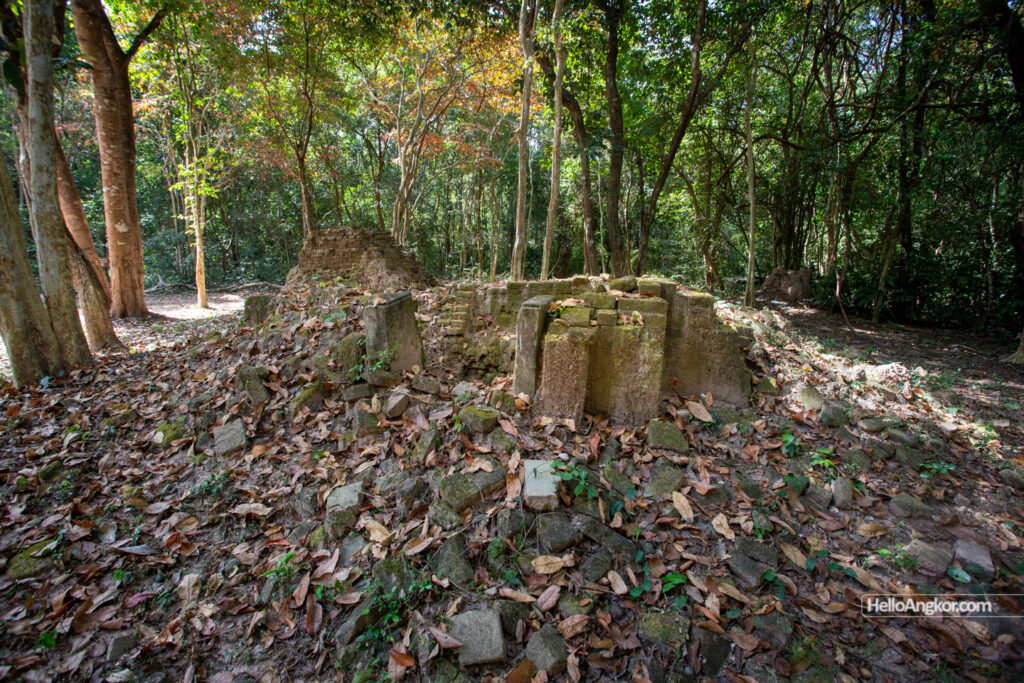
At shrine L5, one inscription was recorded here, K.151, noting a date of the 6th century, and a beautiful lintel from the site can be seen at the Kampong Thom Museum (at the time it was labeled as coming from a nearby site). Researchers note that the lintel comes from a forebody/antechamber that was likely added during the 10/11th c also carrying the art style of that period, whilst on its reverse side, sketches of an earlier art style can be seen suggesting it was recycled from an earlier pre-Angkorian era construction.
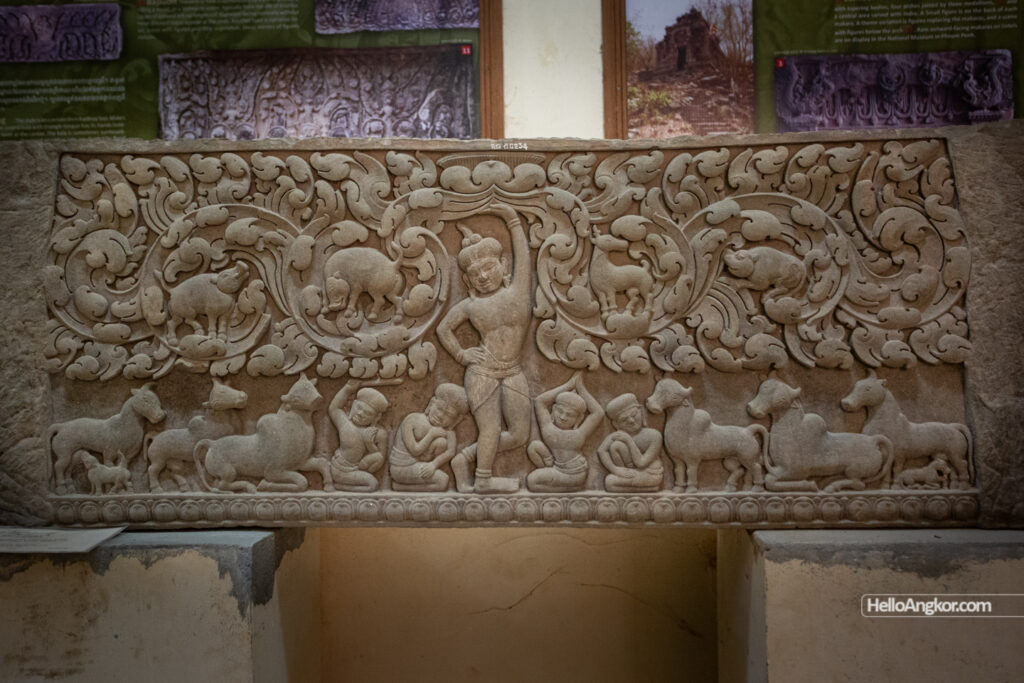
Inscriptions
- K. 151 – 24 lines of Sanskrit – featuring a date of 598 AD, under the reign of Bhavavarman I, noting the erection of a Kapilavasudeva image and the construction of one or two cities to the south at Kapila.
To the south-east (of Roban Romas), writes H. PARMENTIER’, is an important group of which only two buildings can be safely referred to as primitive Khmer art. The southernmost sanctuary, labelled F in the Complement l’Invetaire, and A in Art Khmer Primitif, bears on the north jamb of the door of its vestibule an inscription of 24 lines, of which the first 6 are very well preserved, but from which the others have suffered a lot. The writing, very beautiful at the beginning, gradually deteriorates, and the last lines are rather neglected. One can however, except towards the middle, draw from this inscription a more or less complete reading.
The Sanskrit text includes 12 stanzas: 3 tasantatilaka, 3 upajati, 4 cloka, and 2 arya. It begins with an invocation to Vişnu, and recounts the erection in 520 ç. = 598 A. D., under the reign of Bhavavarman I, of a statue of the god Kapilavasudeva, as well as the foundation of one or two cities on an area located south of the temple and named Kapila.
It is authored by a named Narasimhagupta, who presents himself as a vassal king (samantanṛpa) of the first three kings of Cambodia: Bhavavarman I, Mahendravarman and Içanavarman. By hereditary right, he was lord of Indrapura, and obtained another fief that the ruin of the text prevents from identifying with certainty.
This is the first time, to my knowledge, that one of the great vassals of the nascent Cambodia appears in person. This stronghold of Indrapura, which I thought I could locate in the east, in the region of the present-day Thbón Khmum, was to constitute a principality of a certain importance: we see it reappear at the dawn of the time Angkorian, and serve as a starting point for Jayavarman II for his reconquest of the country
Coedès G. XXXVI. Quelques précisions sur la fin du Fou-nan. In: Bulletin de l’Ecole française d’Extrême-Orient. Tome 43, 1943. pp. 1-8.
References and further reading
- Shimoda Ichita, Shimamoto Sae. Spatial and Chronological Sketch of the Ancient City of Sambor Prei Kuk. In: Aséanie 30, 2012. pp. 11-74.
Map
Site Info
- Site Name: Srei Krup Leak (Pr.) Khmer Name: បា្រសាទស្រីគ្រប់លក្ខណ៍
- Reference ID: HA12875 | Posted: January 18, 2021 | Last Update: March 1st, 2022
- Other Names: M51, Robang Romeas
- Tags/Group: pr, rb, Sambor Prei Kuk, T4, Temples
- Location: Kampong Thom Province > Prasat Sambour District > Sambour Commune > Sambour Village
- MoCFA ID: 1736
- IK Number: 165.04
- Inscription Number/s: K. 151

